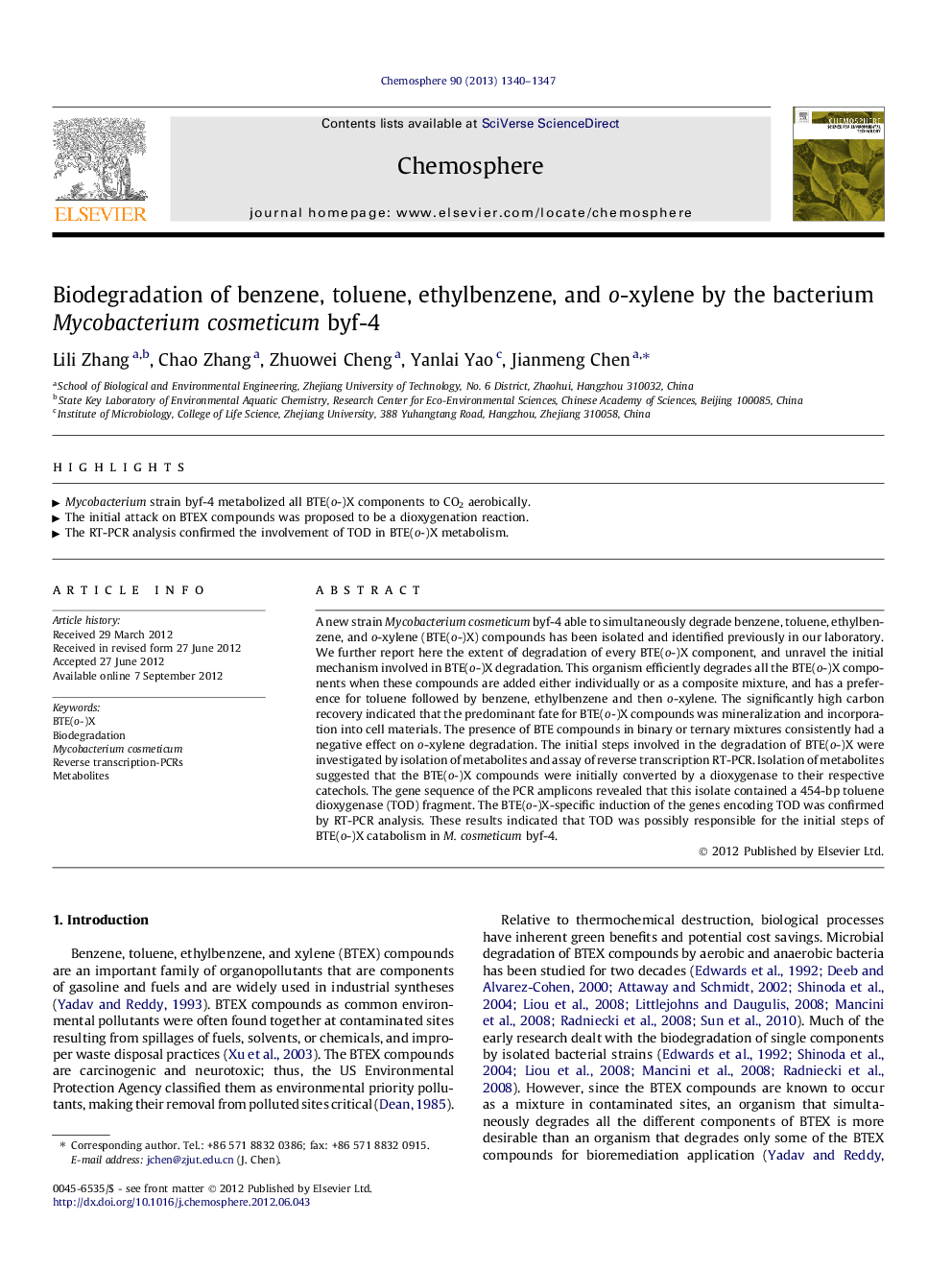| کد مقاله | کد نشریه | سال انتشار | مقاله انگلیسی | نسخه تمام متن |
|---|---|---|---|---|
| 6311205 | 1307505 | 2013 | 8 صفحه PDF | دانلود رایگان |

A new strain Mycobacterium cosmeticum byf-4 able to simultaneously degrade benzene, toluene, ethylbenzene, and o-xylene (BTE(o-)X) compounds has been isolated and identified previously in our laboratory. We further report here the extent of degradation of every BTE(o-)X component, and unravel the initial mechanism involved in BTE(o-)X degradation. This organism efficiently degrades all the BTE(o-)X components when these compounds are added either individually or as a composite mixture, and has a preference for toluene followed by benzene, ethylbenzene and then o-xylene. The significantly high carbon recovery indicated that the predominant fate for BTE(o-)X compounds was mineralization and incorporation into cell materials. The presence of BTE compounds in binary or ternary mixtures consistently had a negative effect on o-xylene degradation. The initial steps involved in the degradation of BTE(o-)X were investigated by isolation of metabolites and assay of reverse transcription RT-PCR. Isolation of metabolites suggested that the BTE(o-)X compounds were initially converted by a dioxygenase to their respective catechols. The gene sequence of the PCR amplicons revealed that this isolate contained a 454-bp toluene dioxygenase (TOD) fragment. The BTE(o-)X-specific induction of the genes encoding TOD was confirmed by RT-PCR analysis. These results indicated that TOD was possibly responsible for the initial steps of BTE(o-)X catabolism in M. cosmeticum byf-4.
⺠Mycobacterium strain byf-4 metabolized all BTE(o-)X components to CO2 aerobically. ⺠The initial attack on BTEX compounds was proposed to be a dioxygenation reaction. ⺠The RT-PCR analysis confirmed the involvement of TOD in BTE(o-)X metabolism.
Journal: Chemosphere - Volume 90, Issue 4, January 2013, Pages 1340-1347